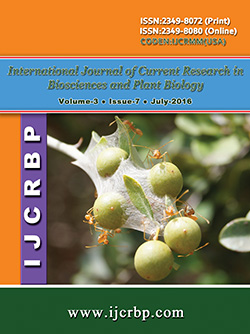 |
Online ISSN : 2349-8080 Issues : 12 per year Publisher : Excellent Publishers Email : editorinchiefijcrbp@gmail.com |
Kagwene Gorilla Sanctuary provides a habitat for Gorilla gorilla diehli, one of the worlds’ most critically endangered sub-species. The objective of this study was to explore some important areas of the nesting ecology of Gorillas such as vegetation structure and architectural characteristics. This survey was accomplished by laying 68 circular plots of 35 m radius each, with an interval distance of 50m for elevations between 1500 m – 2038m on a line transect. A track- based search of foraging paths and knuckle-prints for fresh nest sites. Data was also recorded on the diameter at breast height of the nesting trees about 1.3 m above the ground. Moreso, the tree branches used for nesting were cut and analysed for fibre density. For the nests constructed on the ground, thickness at different elevations was recorded. The recorded data on chect-sheets was analysed by correlation and regression statistical models. For results, five habitat types were established within which a total of 525 nests (339 Tree and 186 ground) were found, 44.2 % of which were in primary forests. The result of the study recorded a significant positive correlation relationship between Tree diameter at breast height (DBH) and nest height (r = 0.331, p=0.00). Also, a weak significant relationship was observed between nest-thickness and elevation (r = 0.028, p=0.875). The plants species from eight families (Guttiferae, Meliaceae, Acanthaceae, Zingiberaceae, Caesalpinioideae, Rubiaceae, Meliaceae, and Commelinaceae) occurred in more than one elevation accounting for abundant nesting materials. 86.4% of nesting trees had fibre density between 0.6 – 1.0, with mean fibre density = 0.82, which is indicative of hard wood. Finally, this study has revealed that some ecological features like habitat structure, vegetation type, DBH, and elevation gradients have impact on the Gorilla nest-construction behavior. However, further studies should be carried out on tree crown effect on nesting, the nutritional constituents of nesting material and the behavioural ecology of gorillas.
